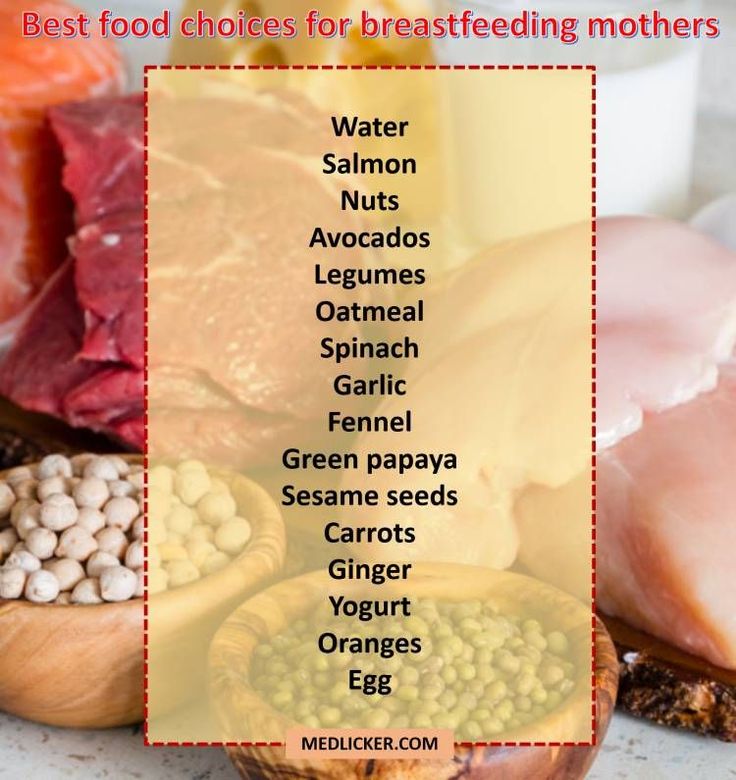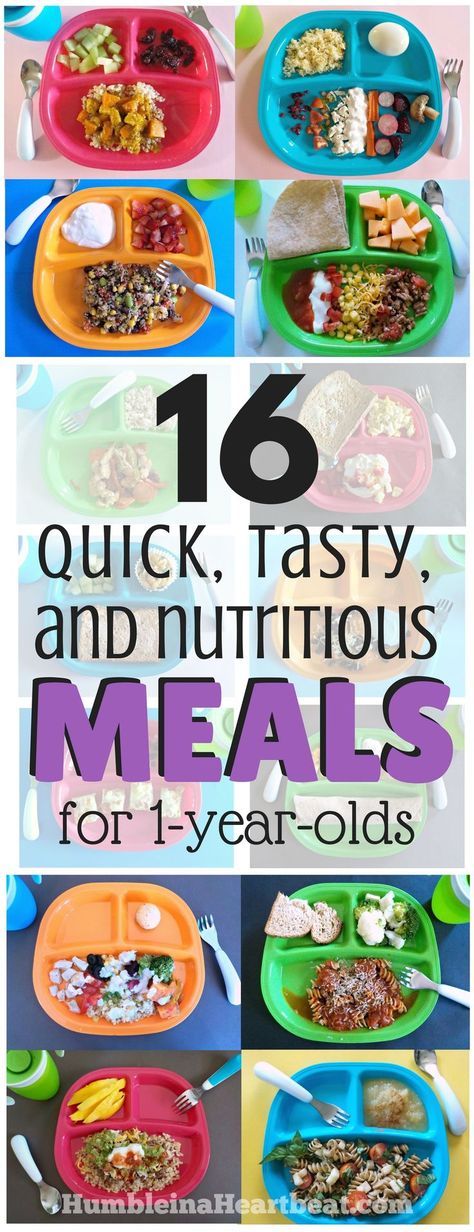Flax seed baby food
Safety, Benefits And Side Effects
Flaxseeds provide healthy bowel and support brain development, but use them cautiously.
Research-backed
MomJunction believes in providing reliable, research-backed information to you. As per our strong editorial policy requirements, we base our health articles on references (citations) taken from authority sites, international journals, and research studies. However, if you find any incongruencies, feel free to write to us.
Image: Shutterstock
Parents may be doubtful about whether or not to use flaxseeds for babies. Flaxseeds or linseeds are a natural source of ALA (alpha-linolenic acid), an essential fatty acid. The seeds are also rich in dietary fiber and several beneficial compounds.
Flaxseeds may be used powdered, whole, or as cold-pressed oil. Regular consumption of flaxseed could provide several long-term health benefits. But are flaxseeds safe for babies? Read this post to know the use of flaxseeds for babies, its potential benefits, and precautions to consider while feeding flaxseeds to babies.
When Can Babies Have Flaxseeds?
According to the NHS, babies can consume finely powdered seeds from the age of six months (1). You can add powdered flaxseeds to puree, mash, porridge, and soup. You can also use flaxseeds to make different baby food preparations, such as flaxseed bread with guacamole.
Flaxseeds are usually well-tolerated by babies and rarely trigger any allergy in babies but might cause side effects in sensitive babies. Therefore consult a pediatrician or pediatric nutritionist before feeding any form of flaxseeds to your baby.
Related: 22 Healthy Porridge Recipes For Babies And Toddlers
Nutritional Value Of Flaxseeds
Flaxseed is nothing less than a superfood that has abundant dietary fiber, omega-3 fatty acids, vitamins K, C, B complex, minerals, and other health-promoting plant compounds. One teaspoon (2.5g) of ground flaxseeds can add the following nutrients to your baby’s diet (2) (3) (4).
| Nutrients | Amount | AI(7-12 months) |
|---|---|---|
| Energy | 13.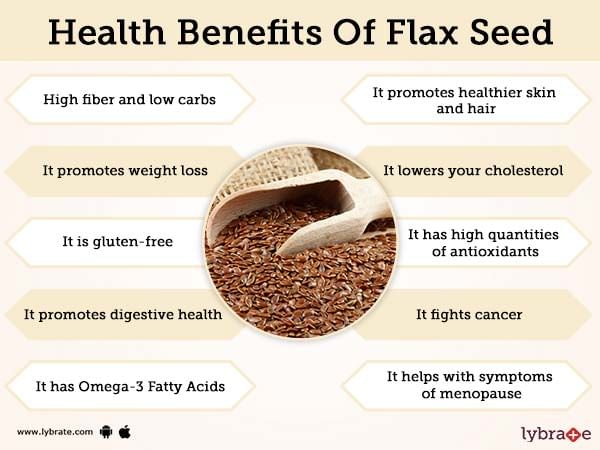 4Kcal 4Kcal | – |
| Protein | 0.457g | – |
| Total lipid (fat) | 1.05g | – |
| Carbohydrate, by the difference | 0.722g | – |
| Fiber, total dietary | 0.683g | – |
| Calcium, Ca | 6.38mg | 260mg |
| Magnesium, Mg | 9.8mg | 75mg |
| Phosphorus, P | 16mg | 275mg |
| Potassium, K | 20.3mg | 860mg |
| Folate, total | 2.18µg | 80µg |
AI = Adequate intake – nutrient level assumed to ensure nutritional adequacy.
Sources: U.S. Department of Agriculture and Oregon State University
Besides these, flaxseeds contain certain bioactive compounds, such as lignans, which promote long-term health on regular consumption (5).
Possible Health Benefits Of Flaxseeds For Babies
Flaxseeds served as a part of a balanced diet could provide the following benefits to your baby.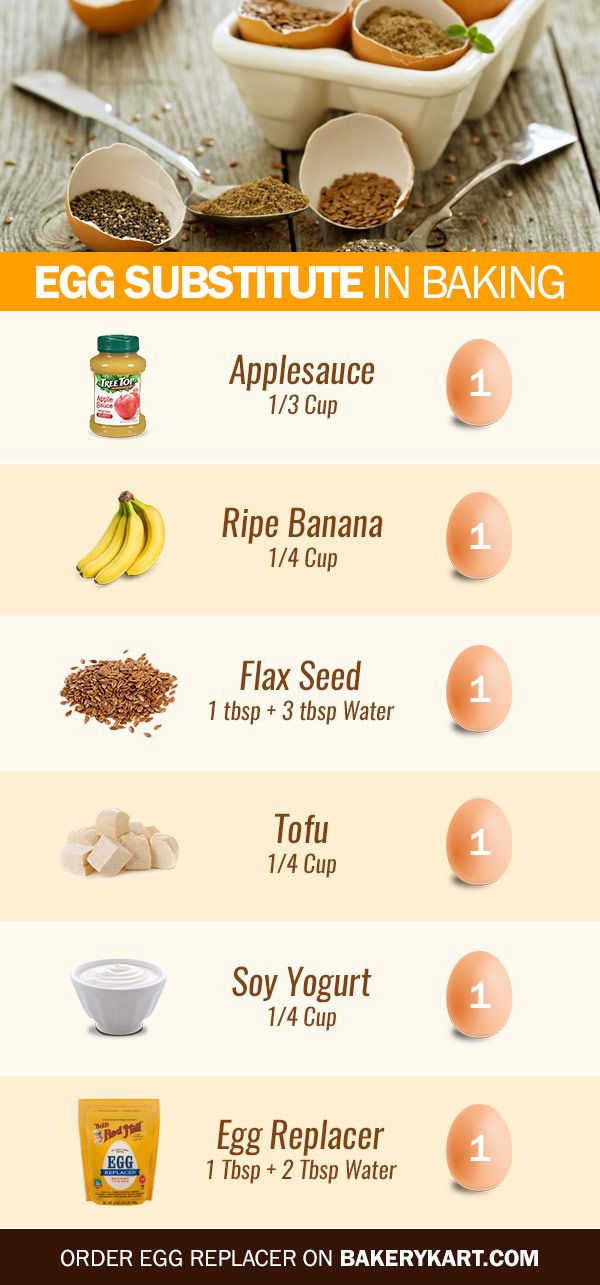
- Provides several nutrients: A teaspoon of flaxseed powder a day can offer ample dietary fiber, minerals, and bioactive compounds that can contribute to your baby’s overall health.
Related: 5 High-Fiber Foods For Babies To Eat
- Aids brain development: Flaxseeds provide high amounts of ALA, an omega-3 fatty acid from which the body synthesizes DHA (docosahexaenoic acid) (6). DHA is a vital element for the healthy brain development of your baby and toddler (7).
- Maintains healthy bowel: Flaxseeds contain both soluble and insoluble fibers. The insoluble fiber absorbs the water and increases the bulk. It helps maintain a healthy bowel, keeping constipation at bay (5). In this regard, coarsely ground flax seed works more efficiently than finely ground flaxseed.
- Boosts gut microbiota: The human gut contains healthy microorganisms known as probiotics that ferment compounds called prebiotics to produce substances that promote health (8).
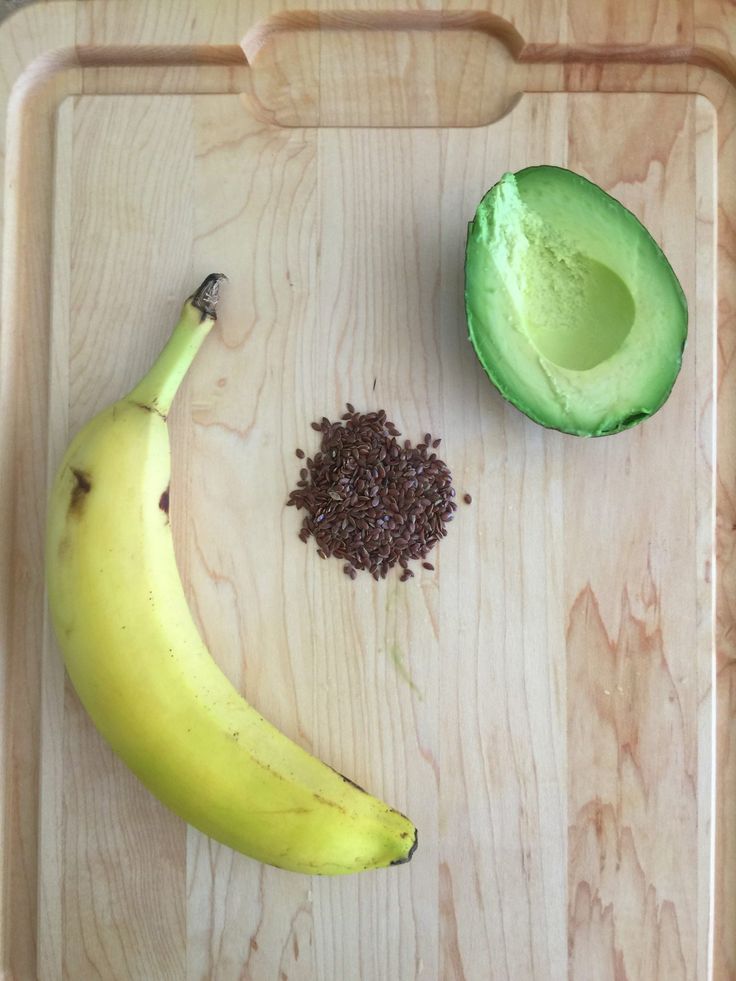 Flaxseed fiber and polysaccharides act as prebiotics, enhancing the probiotics (9). A healthy gut is necessary for a robust immune system.
Flaxseed fiber and polysaccharides act as prebiotics, enhancing the probiotics (9). A healthy gut is necessary for a robust immune system.
Besides these benefits, flaxseeds provide compounds, such as lignans, phenolic acids, and flavonoids (10). These compounds possess antioxidant properties that can support overall health in the long-term.
Related: Are There Any Benefits Of Prebiotics For Babies?
Tips To Select And Store Flaxseeds
Below are some tips that can help you select and store flaxseeds appropriately.
- Flaxseeds come in golden yellow and brownish colors. You can select either to feed your baby as both are nutritionally similar (11). Usually, brown flaxseeds are more commonly used due to their better taste and appearance.
- Avoid raw and unripe flaxseeds as they may contain potentially toxic compounds that can be harmful in large doses (12).
- Buy packaged whole flaxseeds from a reputable and trustworthy brand.
 It is necessary to ensure the product’s safety.
It is necessary to ensure the product’s safety.
- Purchase ground flaxseeds sold in refrigerated vacuum packs. Ground flaxseeds are more susceptible to oxidation, which makes the product rancid. Alternatively, you can buy whole flaxseeds and ground them at home.
- Check the date of packaging and date of expiry when buying whole or ground flaxseeds. Every credible manufacturer mentions these details on the packaging.
- Keep the flaxseeds in their original packaging until you use them. Transfer the flaxseeds in an opaque, airtight container for extended shelflife.
- Store flaxseeds’ container in the refrigerator, away from heat and moisture. Ground flaxseeds stored in such a manner can stay edible for upto six months. You can freeze whole flaxseeds in the freezer for up to a year or two.
Related: 6-Month-Old Baby's Food Chart And Recipes
Precautions To Take While Using Flaxseeds For Babies
Observing precautions ensures the safe ingestion of flaxseeds in babies.
- Do not give whole flaxseeds to your baby. Instead, provide ground flaxseeds added to different baby foods. Whole flaxseeds mostly pass undigested from the gut, making it nearly impossible for the baby to reap their benefits (13).
- Check the freshness of whole or ground flaxseeds before adding them to the food. If the seed or powder smells or tastes rancid, discard it.
- Begin with one-fourth of a teaspoon of ground flaxseeds added to a food item that the baby is already eating comfortably.
- If the baby shows signs and symptoms of intolerance or sensitivity, discontinue feeding and try later. In case the signs and symptoms persist or worsen, consult a pediatrician and do not feed flax seed until the doctor approves it.
- Gradually increase the amount to a teaspoon or two depending on the baby’s digestibility.
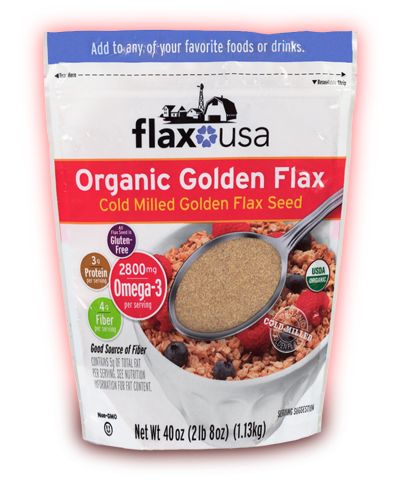 You can also use flaxseed oil, but do not heat it as heat eliminates its nutritional properties.
You can also use flaxseed oil, but do not heat it as heat eliminates its nutritional properties.
- Ensure the baby consumes plenty of fluids or water along with ground flaxseed to prevent digestive problems, such as gas and flatulence, which may occur in sensitive babies.
- Flaxseed allergy isn’t common but possible, especially in babies with a family history of flax allergy. Discontinue feeding flaxseed in any form to your baby if you notice signs of an allergic reaction, such as itching, swelling, wheezing, red rashes (hives), nausea, vomiting, and diarrhea.
- Drug interaction is a possibility with flaxseed ingestion. If your baby is on any medication, consult a pediatrician before serving flaxseeds in any form. Flaxseed ingestion is not advisable if the baby has gastrointestinal stricture or inflammation (12).
Recipes To Include Flaxseeds In Babies’ Diet
Now that you know about flaxseeds, let’s learn some flaxseed recipes you can try for your baby and toddler.
1. Fruity yogurt with ground flaxseeds (6+ months)
Image: Shutterstock
You will need:
- 1cup unsweetened Greek yogurt
- ½ cup frozen blueberries (chopped)
- ½ cup ripe mango (chopped)
- 1 ripe banana (mashed)
- 1tsp ground flaxseeds
How to prepare:
- Blend all the ingredients into a smooth-flowing, lump-free fluid.
- Pour the fluid into a feeding bowl and feed immediately.
- You can add dry fruit powder, a pinch of cinnamon, nutmeg, and a teaspoon of jaggery powder to scale up the recipe’s nutritional profile.
Related: Banana For Babies: Benefits, Precautions, & 6 Recipes To Try
2. Flax oatmeal porridge (8+ months)
Image: Shutterstock
You will need:
- 1 cup water
- ½ cup instant oats
- 1tsp jaggery powder
- 1tsp ground flaxseeds
- ½tsp dry fruit powder
How to prepare:
- Heat water in a saucepan.
 As the water begins bubbling, add oats and ground flaxseeds. Cook until the oats are adequately cooked.
As the water begins bubbling, add oats and ground flaxseeds. Cook until the oats are adequately cooked.
- Add jaggery powder and dry fruit powder and mix well. Turn off the heat and set the saucepan aside.
- Transfer some porridge to a feeding bowl and let your baby self-feed.
3. Flax and carrot muffin (10+ months)
Image: Shutterstock
You will need:
- 2 cup carrot (grated)
- 2 cup apple (grated)
- 1 cup cranberries (dried)
- 1 cup whole wheat flour
- ¾ cup ground flaxseeds
- ¾ cup rolled oats flour
- ¾ cup whole milk
- ½ cup brown sugar
- 2tsp cinnamon powder
- 2tsp baking soda
- 1tsp unsalted butter
- 1tsp baking powder
- 1tsp vanilla bean paste
- 2 eggs
How to prepare:
- Preheat the oven at 350°F (176°C). Grease a muffin tray with butter and set aside.
- Meanwhile, grind oats to make oat flour and grate carrots and apples.
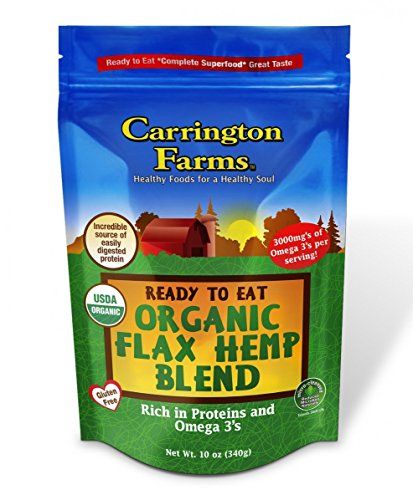
- Mix all the ingredients, except milk, eggs, and vanilla bean paste in a mixing bowl.
- In a separate bowl, whisk eggs and mix with milk and vanilla bean paste. Add this mixture to the previous bowl, mixing them thoroughly to prevent any lumps.
- Pour the batter into the muffin tray and bake for ten to 15 minutes.
- Once done, transfer the muffins to a plate and serve one to your baby for self-feeding.
Related: Wheat For Babies: Right Age To Introduce And Precautions To Take
4. Flaxseed bread (12+ months)
Image: Shutterstock
You will need:
- 1 cup wholewheat flour
- 1 cup rolled oats
- 1 cup raisins (chopped)
- 1 cup whole milk
- 1 cup boiling water
- ⅓ cup jaggery powder
- ¾ cup flaxseeds
- 1tsp baking soda
- 1tsp baking powder
- ¼tsp salt
How to prepare:
- Preheat the oven to 350°F (176°C).
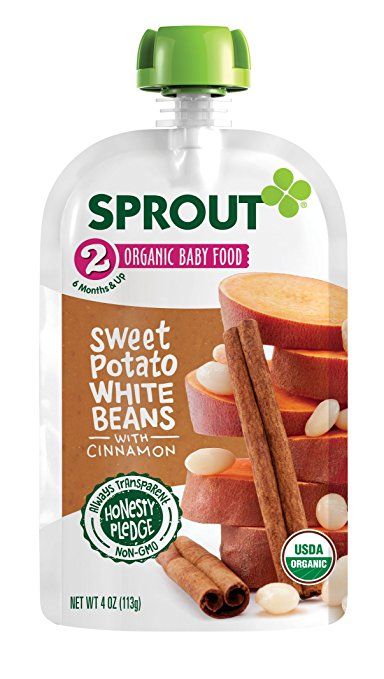 Lightly grease a loaf pan and set aside.
Lightly grease a loaf pan and set aside.
- Put raisins in a large bowl and pour boiling water over them. Add baking soda, mix well, and let stand for five minutes.
- Add flaxseeds, flour, rolled oats, jaggery powder, baking powder, salt, and milk. Stir well until everything is mixed well.
- Pour the mixture of loaf batter into the loaf pan. Bake for about 60 to 75 minutes until the bread rises and develops a deep brown crust.
- Once done, keep the loaf pan on a wire rack to cool. Cut the loaf into thin slices and put one or two slices on the plate.
- Apply homemade spread and serve with a cup of plain yogurt.
Flaxseeds for babies can be a healthy addition to their meals. Due to their nutritional composition, flaxseeds are considered highly beneficial for health by aiding in the baby’s brain development, digestion, and immunity. If your baby is six months and older, you can feed them flaxseeds in powdered form by adding them to their meals while following the precautionary steps and looking out for any signs of sensitivity. You may also try out different flaxseed recipes for babies and feed a nutritious meal to your child.
You may also try out different flaxseed recipes for babies and feed a nutritious meal to your child.
Key Pointers
- Babies can consume flaxseed flour (finely powdered flaxseeds) from the age of six months.
- These seeds are rich sources of fiber, essential vitamins, and minerals that aid in the overall development of your baby.
- You may begin by adding small quantities of flaxseed powder to your baby’s food to check if it suits them well.
- Although flaxseeds seldom trigger allergies in babies, there could be mild side effects in some.
References:
1. Complementary feeding (weaning) your baby; NHS
2. Seeds, flaxseed, FDC ID: 169414; Fooddata Central; USDA
3. Infant Nutrition and Feeding; USDA
4. Potassium; Oregon State University
5. Sunita Mishra and PoojaVerma; Flaxseed- Bioactive compounds and health significance; IOSR Journal Of Humanities And Social Science
6. Essential Fatty Acids; Oregon State University
Essential Fatty Acids; Oregon State University
7. Mihir Parikh et al.; Dietary Flaxseed as a Strategy for Improving Human Health; NCBI
8. Probiotics: What You Need To Know; NCCIH
9. Flaxseed fiber ferments in gut to improve health, reduce obesity; Science Daily
10. PriyankaKajla et al.; Flaxseed—a potential functional food source; NCBI
11. Ankit Goyal et al.; Flax and flaxseed oil: an ancient medicine & modern functional food; Journal of Food Science and Technology (2014)
12. Flaxseed; University of Rochester Medical Center Rochester
13. Are flax seeds good for me?; British Heart Foundation
The following two tabs change content below.
- Reviewer
- Author
Eating Rice During Pregnancy: Safety, Health Benefits, And Side Effects
Eating Rice During Pregnancy: Safety, Health Benefits, And Side Effects
7 Proven Health Benefits Of Coconut Oil During Pregnancy
7 Proven Health Benefits Of Coconut Oil During Pregnancy
10 Delicious Plum Recipes For Your Baby
10 Delicious Plum Recipes For Your Baby
When Babies Can Have Soy Milk, And Myths About Soy Formula
When Babies Can Have Soy Milk, And Myths About Soy Formula
Oranges For Babies: Right Time To Introduce, Benefits, And Recipes
Oranges For Babies: Right Time To Introduce, Benefits, And Recipes
Post Pregnancy Diet: 20 Must-have Foods For New Moms
Post Pregnancy Diet: 20 Must-have Foods For New Moms
Sweet Potato During Pregnancy: Nutritional Value And Health Benefits
Sweet Potato During Pregnancy: Nutritional Value And Health Benefits
9 Proven Health Benefits Of Eating Cabbage During Pregnancy
9 Proven Health Benefits Of Eating Cabbage During Pregnancy
Mango For Babies: Nutritional Value, Benefits, And Recipes
Mango For Babies: Nutritional Value, Benefits, And Recipes
Flax for Baby | When Can I Introduce Flax to My Baby? Learn About Adding Flax in Your Baby's Diet
Is Flax Good for Babies? What exactly is Flax and how will Flax benefit my baby?
Flax, Flax Seed, Ground Flax and Flax Meal are all things that most of us have heard of, either in passing or by reading about it in an article somewhere.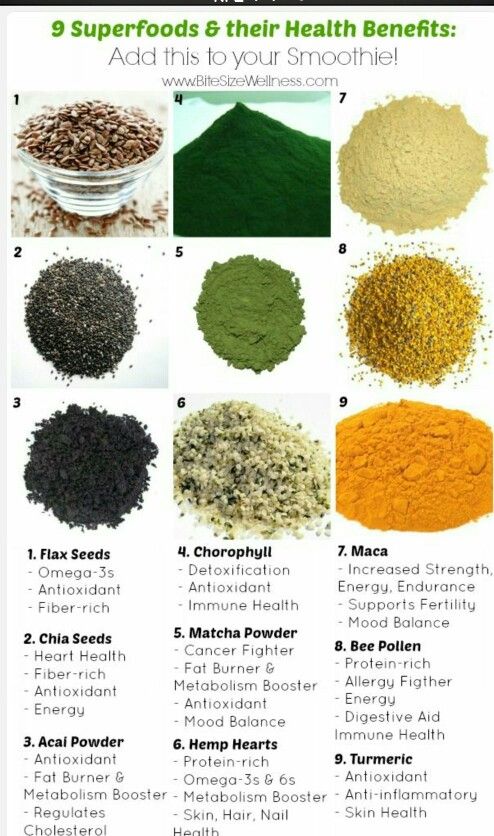 You may have heard that flax is “good for you” and that flax contains Omega 3’s. Despite it’s recent ubiquity, many people have no idea where to buy flax, how to serve it and most importantly, when, and if, it may be introduce to babies and toddlers.
You may have heard that flax is “good for you” and that flax contains Omega 3’s. Despite it’s recent ubiquity, many people have no idea where to buy flax, how to serve it and most importantly, when, and if, it may be introduce to babies and toddlers.
Welcome to the Flax page where you’ll find just the flax (sorry, couldn’t resist) about how and when you may introduce flax, ground flax, flax seeds and flax meal to your baby.
So What is Flax?
Flax is a flowering perennial and it is the seeds of the flax plant that we consume. It’s flowers are plentiful and are amazing to see. Flax blooms from May through September and is mostly grown in Canada and in the Northern Mid-West areas of the United States. Flax has amazing health properties and is a good source of healthy oils, fiber, and other essential nutrients for babies (and adults) good health, growth and development.
Flax has been cultivated for centuries, its cultivation can be traced back to the Stone Age even. The American Colonists grew flax to use its fiber for making (linen) cloth and cultivated Flax for commercial production as far back as the 1700’s
The American Colonists grew flax to use its fiber for making (linen) cloth and cultivated Flax for commercial production as far back as the 1700’s
Flax has 3 essential and amazing components that make it a powerhouse of nutrition. For it’s size, Flax sure delivers! The three essential components of Flax that are wonderful for our bodies are:
Omega-3 oils – You may recognize them as “alpha-linolenic acid” or ALA
Lignans
Fiber, both soluble and insoluble
When Can My Baby Begin To Eat Flax?
You will most often find pediatricians who say that incorporating Flax into your baby’s diet is safe around 7-8 months old. Ideally, you would begin offering you baby Flax in the form of either Flax meal (finely ground Flax Seeds) or Flax Oil.
How Much Flax Should I Offer my Baby
Include Flax in your baby’s diet but be sure to use no more than 3 teaspoon of Flax per day and offer it on a rotating basis until you see how it affects your little one. While one cannot really “overdose” on Flax, it is important to keep the dosage relatively low as Flax is a natural laxative. It is possible that very loose stools and/or diarrhea will occur with eating too much Flax. Flax is a great assistant in the relief of constipation! Note that you may add up to 3 teaspoons of flax, spread throughout several “meals” during a day.
While one cannot really “overdose” on Flax, it is important to keep the dosage relatively low as Flax is a natural laxative. It is possible that very loose stools and/or diarrhea will occur with eating too much Flax. Flax is a great assistant in the relief of constipation! Note that you may add up to 3 teaspoons of flax, spread throughout several “meals” during a day.
Many parents who give their babies Flax increase the amount once baby has turned 1 or 2 years old.
As with any new food, it is important that you watch out for any possible reactions and speak to your baby’s pediatrician about adding Flax to the diet. While Flax is not considered a high allergen, you still want to watch for any digestive upsets.
Can I Use Flax Oil as a Substitute for Other Oils in Cooking?No! You cannot cook with Flax Oil as you do with Olive Oil. Flax oil will burn and go rancid when heated.
How do I store Flax?Flax must be stored properly as it is very delicate. Whether you are using Flax Oil or Ground Flax, store your Flax in the refrigerator. Flax can go rancid very quickly and then it will be unhealthy to eat. Whole Flax Seeds are not as delicate and may be kept for up to 2 years in a dry cool sealed container.
Whether you are using Flax Oil or Ground Flax, store your Flax in the refrigerator. Flax can go rancid very quickly and then it will be unhealthy to eat. Whole Flax Seeds are not as delicate and may be kept for up to 2 years in a dry cool sealed container.
Many people add whole Flax Seeds directly to their baked goods and cereals. It has been found that the seeds may not prove to be as healthful as using Flax Oil, Ground Flax or Flax Meal. The whole seeds may not break down enough in the digestive system to completely release all of the wholesome and healthy goodness of the Flax.
Flax Oil, Ground Flax or Flax Meal may be added to your Baby’s food in a variety of ways. (ensure your choice of foods is age appropriate for your baby..)
| Add Flax Oil, Flax Meal or ground Flax Seeds to your baby’s infant cereals
| |
| Sprinkle Flax Meal or ground Flax Seeds in your baby’s yogurt, mixed in or over baby’s fruit purées, add it to veggie purees and meat/rice/veggie meals too.
| |
| Flax Meal or Ground Flax is great in J&J’s Baby Meatballs, meatloaf, fish cakes and homemade chicken nuggets too.
| |
| Baked goods with added Flax Meal give your teething biscuits and rusks an extra nutritional boost too. Try Flax Meal or Ground Flax in Baby Cereal Pancakes too.
| |
| Flax oil may be added to porridge, yogurt and anything else you may wish to add it to. |
Remember, always consult with your pediatrician regarding introducing solid foods to your baby and specifically discuss any foods that may pose allergy risks for your baby.
This site complies with the HONcode standard for trustworthy health information: verify here.
SHARE ON FACEBOOK SHARE ON PINTEREST
Flax seeds for children - is it possible with constipation, from what age (from worms, parasites)?
07/30/2016
Contents
- 1 What is it?
- 2 Benefits of Flaxseed
- 3 When to Use
- 4 Directions for Use
- 5 Contraindications and Age Restrictions
- 6 Helpful Hints
- 7 Video: What are Flaxseed Crackers
A plant with blue flowers, the stems of which have long been used in Rus' for the production of summer fabric, also has medicinal properties.
 Flax flower, withering, forms a box with seeds. They are used to make oil. It is unique, valued for its content of polyunsaturated fatty acids. It also contains vitamins E and A, minerals, proteins and other useful substances. nine0003 Blooming flax
Flax flower, withering, forms a box with seeds. They are used to make oil. It is unique, valued for its content of polyunsaturated fatty acids. It also contains vitamins E and A, minerals, proteins and other useful substances. nine0003 Blooming flax The lignin component (vegetable fatty acid) puts flax seeds in first place in terms of its content. Unique properties are given to this product by natural fiber. Also, the seed is rich in phytosterols, starch, sterols, glycosides, dietary fiber, carbohydrates.
Flax seedsA huge range of useful components makes flax seeds an indispensable tool in the fight against many ailments.
Flax seeds can be ground into flour, added to various dishes to give a special taste and medicinal properties. nine0003
Large quantity of seeds in 100 grams. Each has a set of useful components that saturate the body with health and energy. By adding flax seeds in various forms to food, you can cope with various diseases. You just need to remember that they have their contraindications.
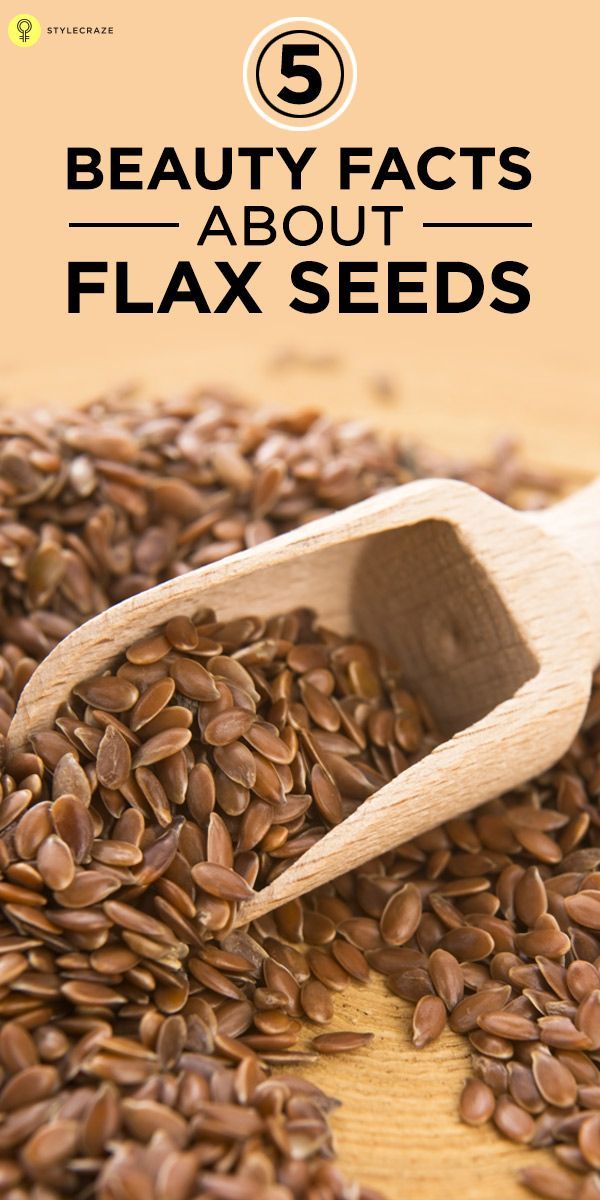
The benefits of flaxseed
The chemical composition of the product allows it to be used in the treatment of many diseases, adding to other medicines. In most cases, it has a beneficial effect on both adults and children. nine0003 Flax seed content
In children's medical practice, flaxseed is most often used for constipation, strengthening the immune system and removing parasites. Seeds will help babies up to a year.
Flaxseeds have the following effect:
- The polyunsaturated acids that make up the composition normalize brain activity, allowing the child to develop properly, and contribute to the elimination of toxins.
- Linseed oil, obtained from seeds, has a beneficial effect on the condition of the skin, healing ulcers and wounds. nine0008
- Treats inflammation of the upper respiratory tract.
- Promote the elimination of worms.
- Facilitate the course of diseases of the gastrointestinal tract.
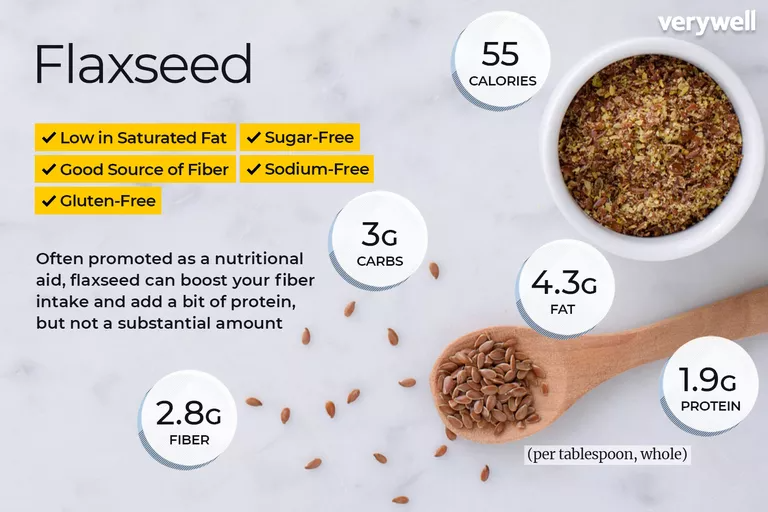
Flaxseed and decoction prepared from it show their properties effectively and safely. It does not cause irritation and addiction, it is very rare to be allergic to them.
Their action lies in the fact that getting into the intestines, they swell and thereby increase intestinal peristalsis. Mucus also contributes to this, which just protects from irritation. nine0003
If there are no contraindications, they can be safely included in the diet.
When to use
The benefits of flax seeds for babies cannot be overestimated. The tool helps with many serious diseases that occur in children. But before you start using this product, you need to make sure that there are no contraindications to its use. It is an excellent helper for:
Vitamins found in flax seeds- diabetes mellitus; natural fiber and omega-3 fatty acids can lower blood sugar and alleviate the general condition; nine0008
- constipation; a large amount of soluble and insoluble dietary fiber facilitates the act of defecation, subject to the consumption of different liquids (comotes, tea, juice, water), which should be a lot; to this it is necessary to add physical exercises and give the child more vegetables and fruits;
- arthritis; rare, but causes severe pain to children;
- cardiovascular diseases; to congenital diseases (heart disease, arrhythmia, etc.
 ), today more and more often acquired ones are added, related to nutrition and lifestyle; nine0008
), today more and more often acquired ones are added, related to nutrition and lifestyle; nine0008 - strengthening immunity; helps to increase the body's resistance to various diseases;
- depression; relieve anxiety, give a charge of vivacity for the whole day;
- coughing; contributes to the soft discharge of sputum;
- removal of parasites from the body.
The child's body will be grateful for the help provided by the seeds of this wonderful plant. Before using the remedy (infusion, decoction, oil), you need to make sure that the child is not allergic to this drug. nine0003
Methods of application
The healing properties of the product have allowed it to be widely used in folk medicine. If there are contraindications to taking a certain drug or an allergy to something, you can give this natural product, and it will help to cope with the disease.
The use of flax seeds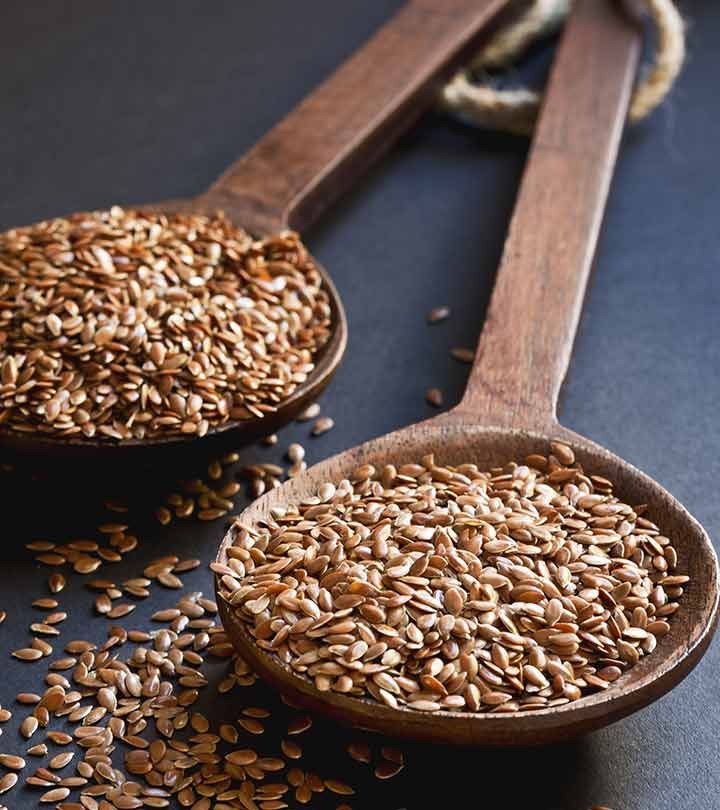 Traditional medicine has many such recipes.
Traditional medicine has many such recipes. Flax seeds for medicinal purposes for children can be used in infusions and decoctions. So it retains all the useful substances, and it has a greater effect. nine0003
To prepare an infusion for coughs, grind two tablespoons of the seeds in a coffee grinder, pour a glass of boiling water over it and insist (optional, if the child is not allergic, you can add honey). Take 2 tbsp. l. up to 6 times a day.
For constipation, the infusion is prepared a little differently: 1 tsp. pour half a glass of boiling water, stirring, leave for 15 minutes. Take up to 3 times a day, half a teaspoon diluted in water. This recipe will be effective in removing worms. To do this, you need to give the infusion to the child for several days in a row. Thus, its effect will be enhanced. nine0003 Infusion of flax seeds
Oil from flax seeds is good for massage in children under one year old. So you can help the delicate skin of babies.
 After a course of massage, the skin will become elastic, less prone to diaper rash.
After a course of massage, the skin will become elastic, less prone to diaper rash. Seed compresses also work well. They need to be warmed up, poured into a bag and applied to a sore spot. Helps with inflammation of the joints that babies have during a cold.
To increase immunity, you can use the following recipe: grind the seed in a coffee grinder, mix with sugar in a ratio of 3/1, divide into three parts, consume during the day. nine0003
This product is an effective remedy for worms and parasites. Seeds ground into powder and infused in water in the proportion of 1 tbsp will help. l for 1 glass. In case of severe infection, the powder should be added to kefir in the proportion of 1 tbsp. l. per 100 ml. Drink three times a day for a week. In the second and third weeks, increase the dose by 1 tbsp. l. - with such treatment, there will be no trace of worms and some other parasites.
Contraindications and age limits
Contraindications for useUsually, the use of flax seeds and oil from them has no side effects.
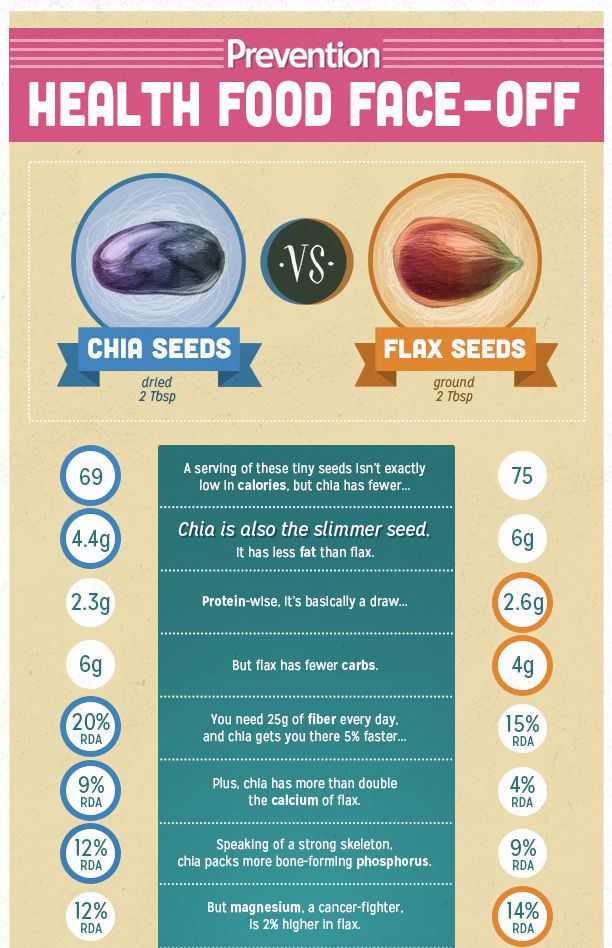 However, they are contraindicated in cholelithiasis, intestinal obstruction, hepatitis, some abnormalities in the composition of the blood, and taking hormones and antidepressants.
However, they are contraindicated in cholelithiasis, intestinal obstruction, hepatitis, some abnormalities in the composition of the blood, and taking hormones and antidepressants. It is necessary to give such preparations to a child very carefully. For children up to a year, the recommended norm is 12-15 drops; up to three years - half a teaspoon; up to 7 years - one teaspoon; up to 14 years - one dessert spoon. A pediatrician will help you choose an individual dosage in each individual case. nine0003
In addition, we must remember that the infusion and decoction prepared from flaxseeds must always be fresh.
Helpful Hints
The seed of this wonderful plant can be used in cooking. At the same time, useful substances are included in the composition of the usual dish. In addition, the food is varied.
The benefits of flax seedsWhen making various pastries, you can add ground seed to flour in a ratio of 1/10. This small part of the seeds will make the dough soft and tasty.
 nine0003
nine0003 The seeds can also be used to make porridge. First they must be ground, then 3 tbsp. l. pour boiling milk or water. If you are allergic to milk, beat the mixture, leave to infuse for a few minutes, add sugar and salt. In this form, the seed retains all useful properties.
Flaxseed decoction will perfectly complement the soup, jelly, sauce, jelly can be prepared on its basis. At the same time, the dishes are additionally enriched with nutrients.
Flax seed biscuitsIt is possible to pamper your child with any cocktail to which linseed oil is added. For 200 ml, it is enough to add 1 tsp. oils. The drink will be tasty and healthy.
Linseed jelly will help get rid of worms and parasites. To prepare it, you need to grind with a blender 2 tbsp. l. pour seeds with a liter of water, cook for about an hour. Drink 100 ml per day.
Experts advise parents to use flaxseed more often in the treatment and prevention of childhood diseases. In their opinion, it has very effective properties in removing worms, a decoction of seeds is a faithful assistant for colic in the baby's stomach, it is recommended to give the infusion to strengthen immunity.
 nine0003
nine0003 Regular consumption of flaxseed is an excellent preventive measure for the child's body.
Video: Flax seed crackers
Didn't find your organization?
Add now!is it possible to use flaxseed porridge, from what age, from constipation
Reading time: 5 minutes
Flaxseed has been widely used in the field of cooking and traditional medicine for centuries. Due to its numerous medicinal properties, it is useful for a person of any age - both an adult and a child. Flax has a positive effect on the state of the digestive system, improves immunity, and due to hypoallergenicity, it can be given even to infants. That is why the question often arises of why flaxseed porridge is useful for children, how and when it is best to introduce this product into the baby's diet.
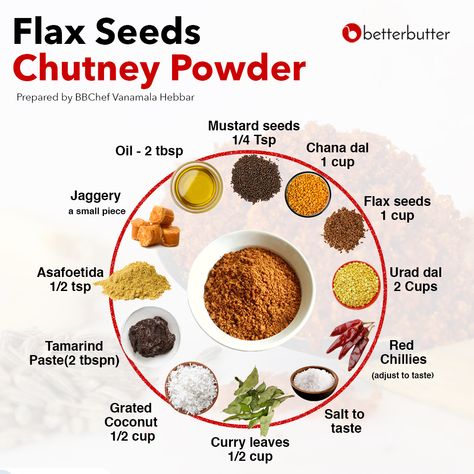 nine0003
nine0003 1 Is it possible for children to be linen porridge and when
1.1 composition of flaxseed
1.2 The main beneficial properties of flax seeds
1.3 Features of the introduction of flax seed into the children's diet
1.4 Rules for consuming children
1.5 Recipes of linen porridge
1.5.1 Flax-buckwheat
1.5.2 Flax-fruit porridge
1.5.3 With prunes
1.6 Possible harm to the child's body
1.6.1 Reviews of flaxseeds
1.6.1.1 Similar entries:
The composition of flaxseed
The benefits of flaxseeds are due to the large amount of vitamins, as well as other active, rare substances necessary for the human body.
- vitamins of groups A, E, B, PP;
- minerals - copper, magnesium, phosphorus;
- Omega 3, 6, 9 polyunsaturated fatty acids;
- lignins;
- mucus and glycosides.
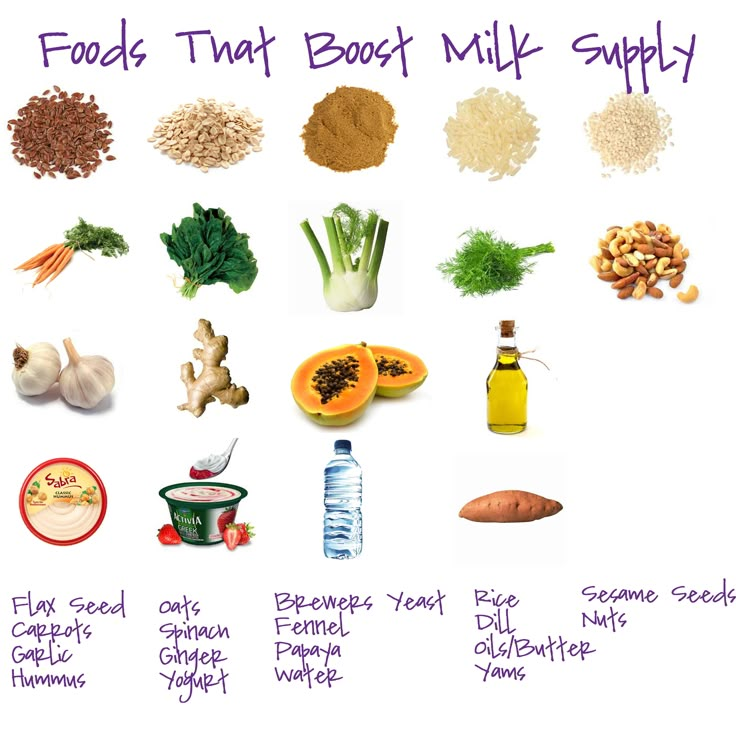
Flax seeds contain a lot of vegetable fiber, which stimulates intestinal motility and accelerates the cleansing of the gastrointestinal tract from accumulated toxins and toxins. Thanks to this, flax seed is very useful for children - it helps to gently get rid of constipation and normalize stools. nine0003
The main useful properties of flax seeds
The use of flaxseed porridge strengthens the body and has a positive effect on the functioning of many internal organs. Dr. Komarovsky and the seeds can be used as a mild, gentle laxative for babies who suffer from frequent constipation. nine0008
- Flax seed for children is used in inflammatory disease of the upper respiratory tract accompanied by coughing fits.
- Flax seed porridge for children can be used as a tonic for problems with the musculoskeletal system.
- Porridge helps cleanse the body of helminths.
- Flax seeds for children will be an effective remedy for the treatment of dysbacteriosis and other diseases of the digestive system.

- Normalizes blood glucose levels, preventing the development of diabetes. nine0008
- Flaxseed may be added to the menu for allergic reactions accompanied by skin rashes.
- It is of great benefit to the child's body - it activates the work of the brain and central nervous system, improves memory and sleep.
- infants up to a year - 10-15 drops once a day;
- children after one year and up to two years - half a teaspoon once a day; nine0008
- two or more years - you need to take a teaspoon of decoction.

- Allergic reactions accompanied by hives and other skin rashes - vegetable seed flour should be steamed with a glass of boiling water and used for compresses, applying them to the rashes.
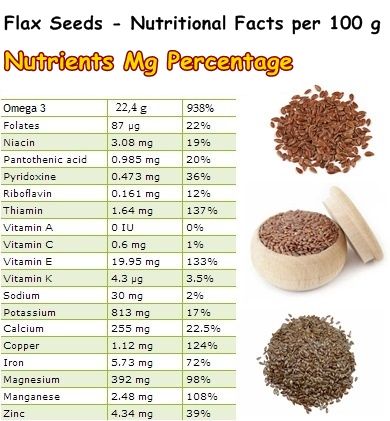
- Frequent constipation and intestinal dysbacteriosis - a spoonful of flax seeds should be poured with a cup of boiling water, then left. Infusion time - 30-35 minutes. After this, the agent should be passed through gauze folded in several layers and consumed in small sips throughout the day.
- Helminthiasis - flaxseed infusion prepared according to the above recipe is also used to combat worms. It is recommended to take it for a week - this is quite enough for the treatment of any form of helminthiasis. Also, the decoction is added to other drinks - kefir, compote, fruit drink. nine0008
- Diseases of the joints - in a hot frying pan without oil, you need to fry the seeds, then pour them into a bag of linen and apply to sore spots.
- Diaper rash, burns, contact dermatitis and other dermatological diseases - flax oil is used to massage the skin of the baby.
- hepatitis and other liver diseases;
- intestinal obstruction;
- cholelithiasis; nine0008
- concomitant use of antidepressants or hormonal drugs.
Flaxseeds can be used to treat and prevent the following diseases - miliaria and other dermatological pathologies, arthritis, diabetes, dysbacteriosis, allergies, cardiovascular diseases.
Peculiarities of introducing flaxseed into children's diet
At what age can children eat flaxseed porridge - this question is of interest to many parents. Pediatricians are allowed to introduce this product into the diet of young patients during the first year of life, best in the form of a decoction with the addition of flaxseed.
It is very important to observe the dosage:
Children over the age of 7 take a tablespoon of flaxseed tea.
It is not recommended to independently increase the children's dosage without first consulting a pediatrician, as this may lead to a violation of the child's digestion.
Rules for use by children
It is necessary to know not only at what age children are given flax seed, but also how to do it correctly. Not every child agrees to take a decoction - in such cases, flaxseeds are ground into flour and added to other foods and dishes. Flaxseed oil is also used for the same purpose. nine0003
Healthy seeds are practically tasteless, so they can be combined with any kind of food - fruits, vegetables, cereals, casseroles, salads and various side dishes.
Useful recipes for preparing a flaxseed product for the treatment of various diseases:
The agent can also be used in the treatment of dry or wet cough - for this purpose, 2 tablespoons of crushed vegetable raw materials should be poured into 250 ml of boiling water and left to infuse for 35-45 minutes. Filter the finished infusion and let the child drink in small sips up to 4-6 times a day. nine0003
Filter the finished infusion and let the child drink in small sips up to 4-6 times a day. nine0003
Recipes for flaxseed porridge for children
There are many recipes for delicious, fragrant, satisfying and extremely healthy porridge with the addition of flaxseeds. Not a single child will refuse such a treat.
Flax-gross
| Flour of seeds | 150 g | ||||||
| Greek cereal | 150 g | 2 l | |||||
| honey | 2 tbsp. l | ||||||
| Butter | |||||||
| Water | 450 ml Next, pour the mixture into a small saucepan, add pre-steamed raisins or dried apricots and pour boiling water over. After 50-55 minutes, season the finished porridge with honey and butter. If there is an allergy to bee products, honey is not used. nine0003 Flax-fruit porridge
|

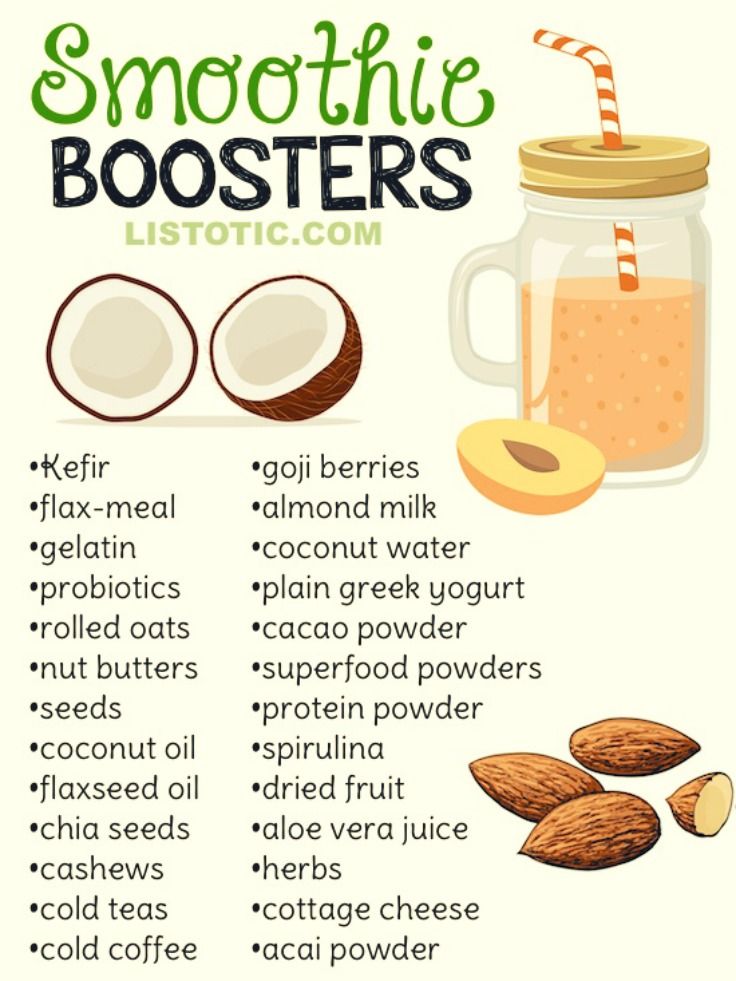
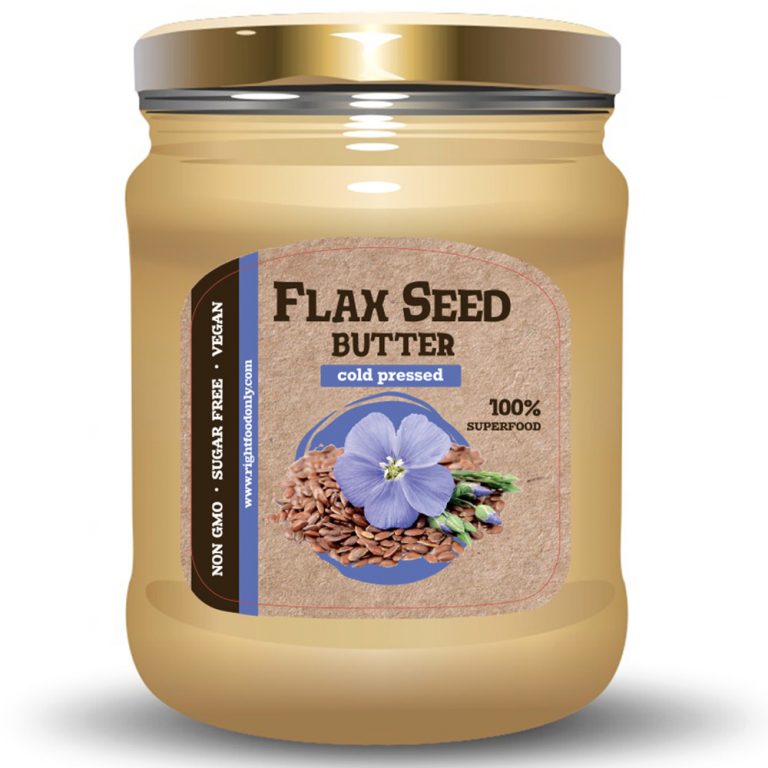 Ready porridge is decorated at its discretion - chopped nuts, berries, mint leaves. nine0003
Ready porridge is decorated at its discretion - chopped nuts, berries, mint leaves. nine0003  In most cases, parents leave positive feedback. They emphasize that the herbal product is most effective in the treatment of dry, unproductive cough, constipation and other diseases of the gastrointestinal tract. nine0003
In most cases, parents leave positive feedback. They emphasize that the herbal product is most effective in the treatment of dry, unproductive cough, constipation and other diseases of the gastrointestinal tract. nine0003 








